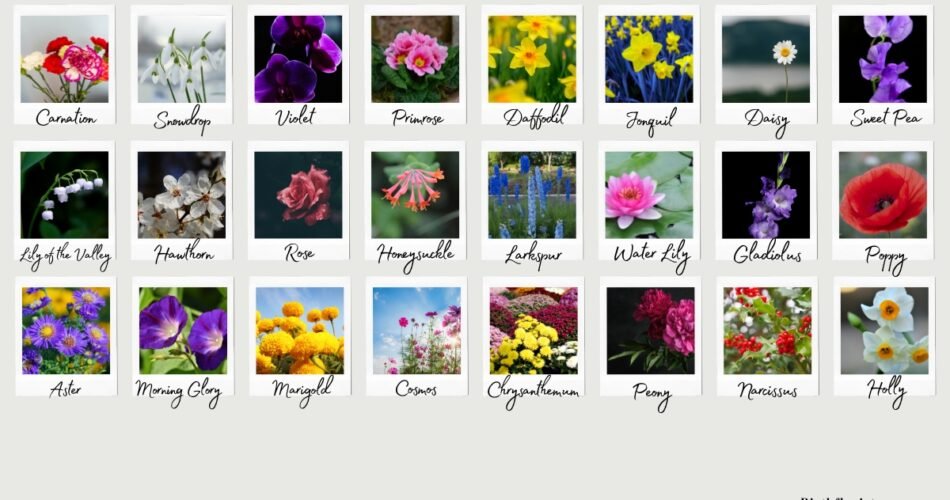Birth months bring with them a unique duo of flowers, each telling its own story through petals and fragrance.
These monthly blooms do more than captivate with their beauty; they serve as muses, imbued with histories, connections, and cultural richness that traverse the globe.
From January’s resilient snowdrops, breaking through the winter’s embrace with whispers of hope, to December’s holly, standing guard with its festive vigor, this exploration into the world of birth month flowers is a celebration of life’s ebb and flow.
Let this journey inspire you, drawing from the natural cadence of the seasons, and embrace the fresh beginnings each flower, each month, presents in our lives.
Why Are There Two Birth Flowers Per Month?
The tradition of associating specific flowers with each month dates back centuries and has roots in various cultures and folklore.
Over time, as these traditions intertwined and evolved, many months came to be represented by more than one flower.
This duality adds depth and symbolism, mirroring the complexity of our lives and experiences.
Moreover, having two birth flowers per month offers a more inclusive array of characteristics, emotions, and messages that people can identify with or use to express themselves.
Whether it’s the boldness of the gladiolus in August or the modesty of the violet in February, the diversity of birth month flowers ensures that there’s a bloom for every personality, occasion, and sentiment.
The Birth Month Flowers
Diving into the calendar, each month unfolds with its unique floral emblems, each carrying whispers of ancient lore and heartfelt symbolism. Let’s wander through this garden of months, where each bloom tells its own story.
Birth Flowers Chart
The Birth Flowers Chart presents a unique flower for each month of the year, capturing their special characteristics and symbolic meanings.
| Month | Birth Flower | Characteristics | Symbolism |
|---|---|---|---|
| January | Carnation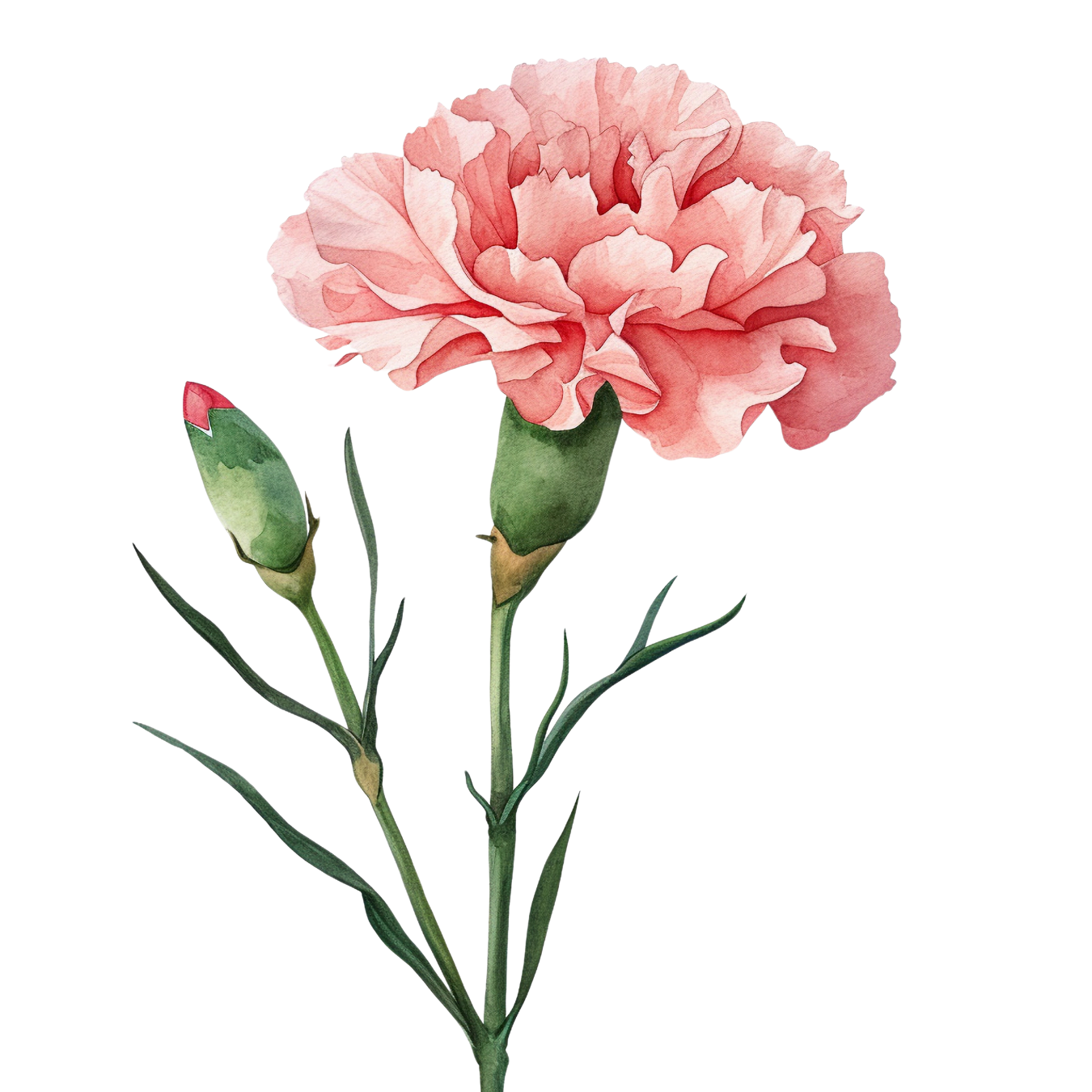 | Frilly petals, a variety of colors, sweet fragrance | Love, fascination, distinction |
Snowdrop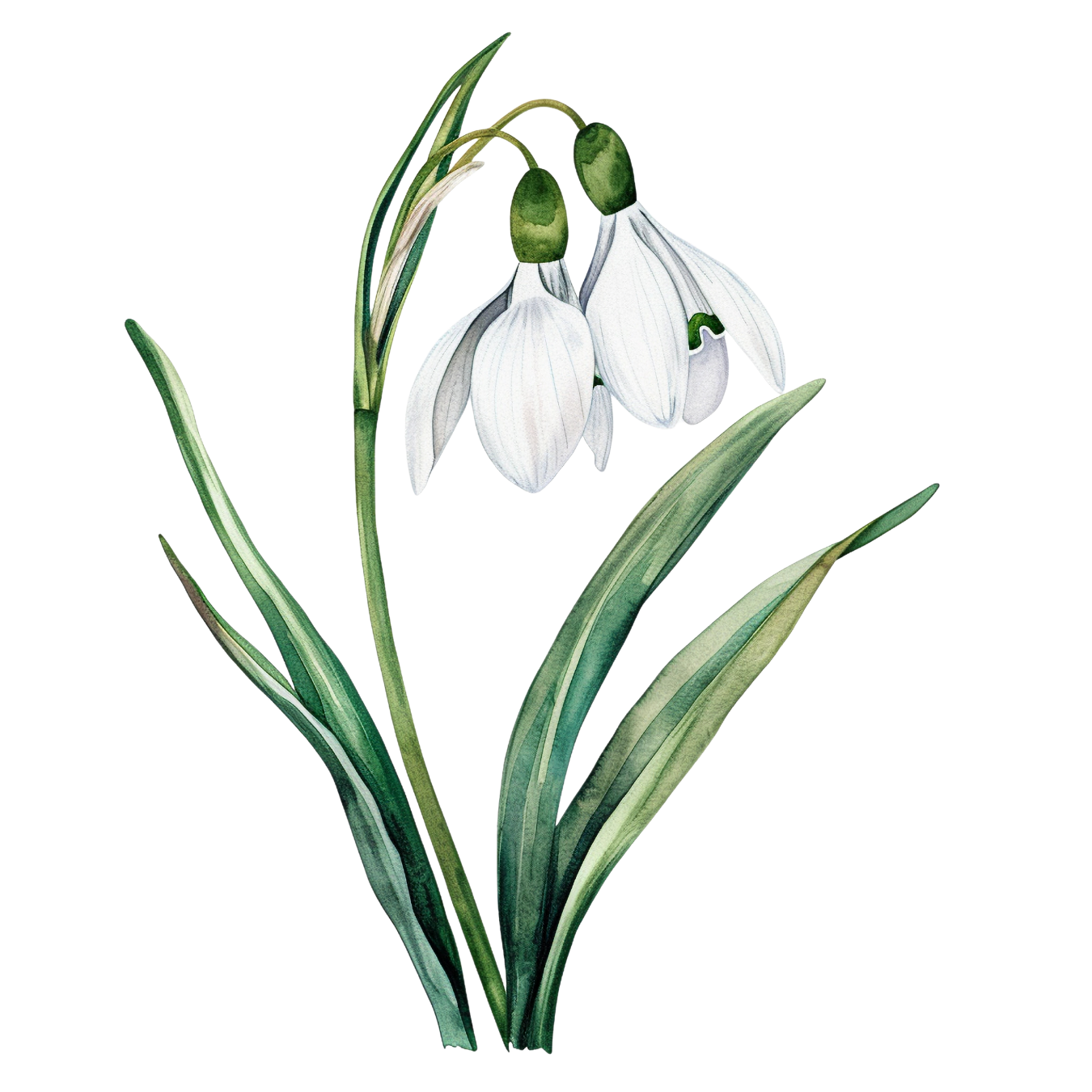 | Petite, bell-shaped, white petals, blooms in late winter | Hope, purity, rebirth | |
| February | Violet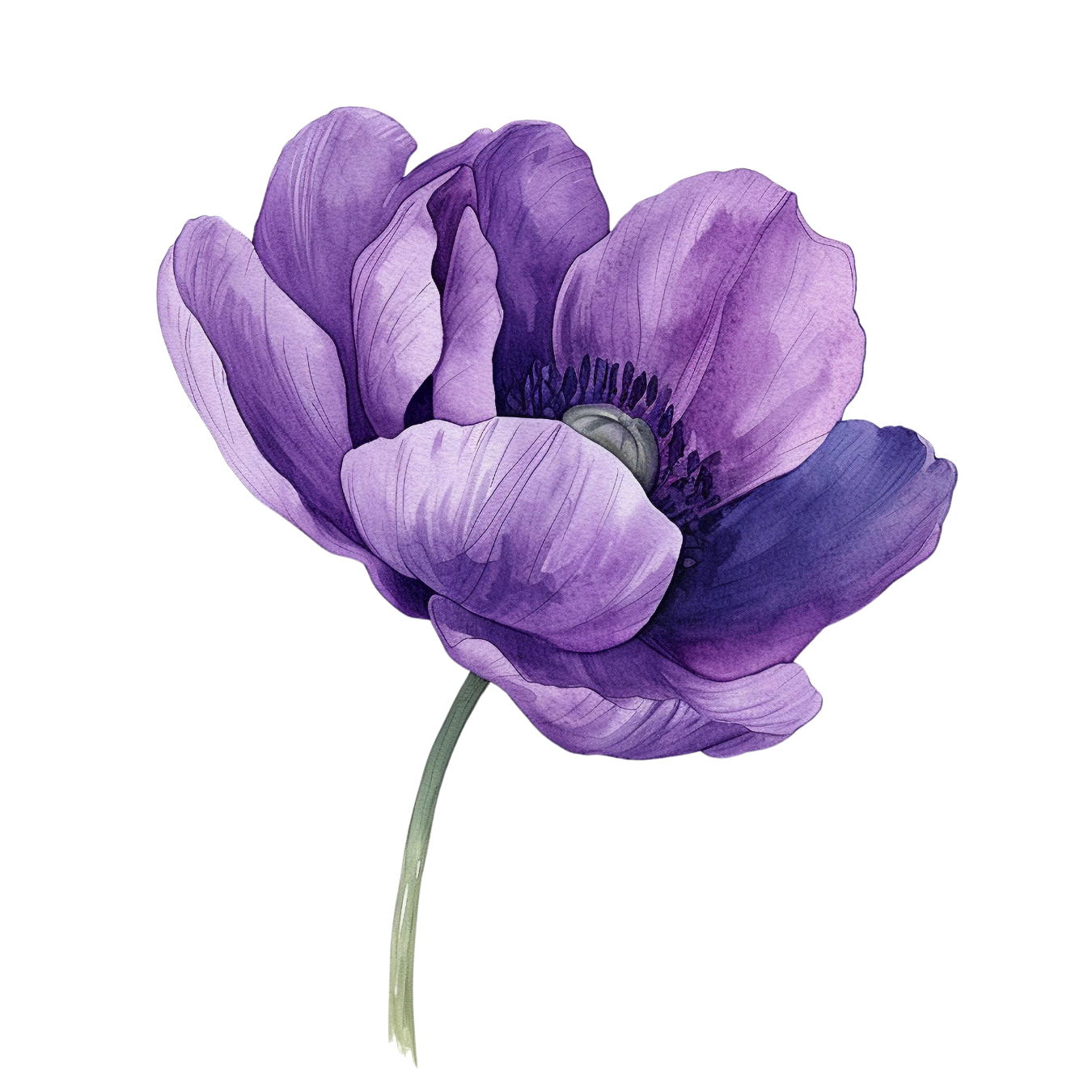 | Heart-shaped leaves, violet or white flowers | Virtue, modesty, faithfulness |
Primrose | Bright colors, often yellow, grows in clusters | Young love, eternal existence | |
| March | Daffodil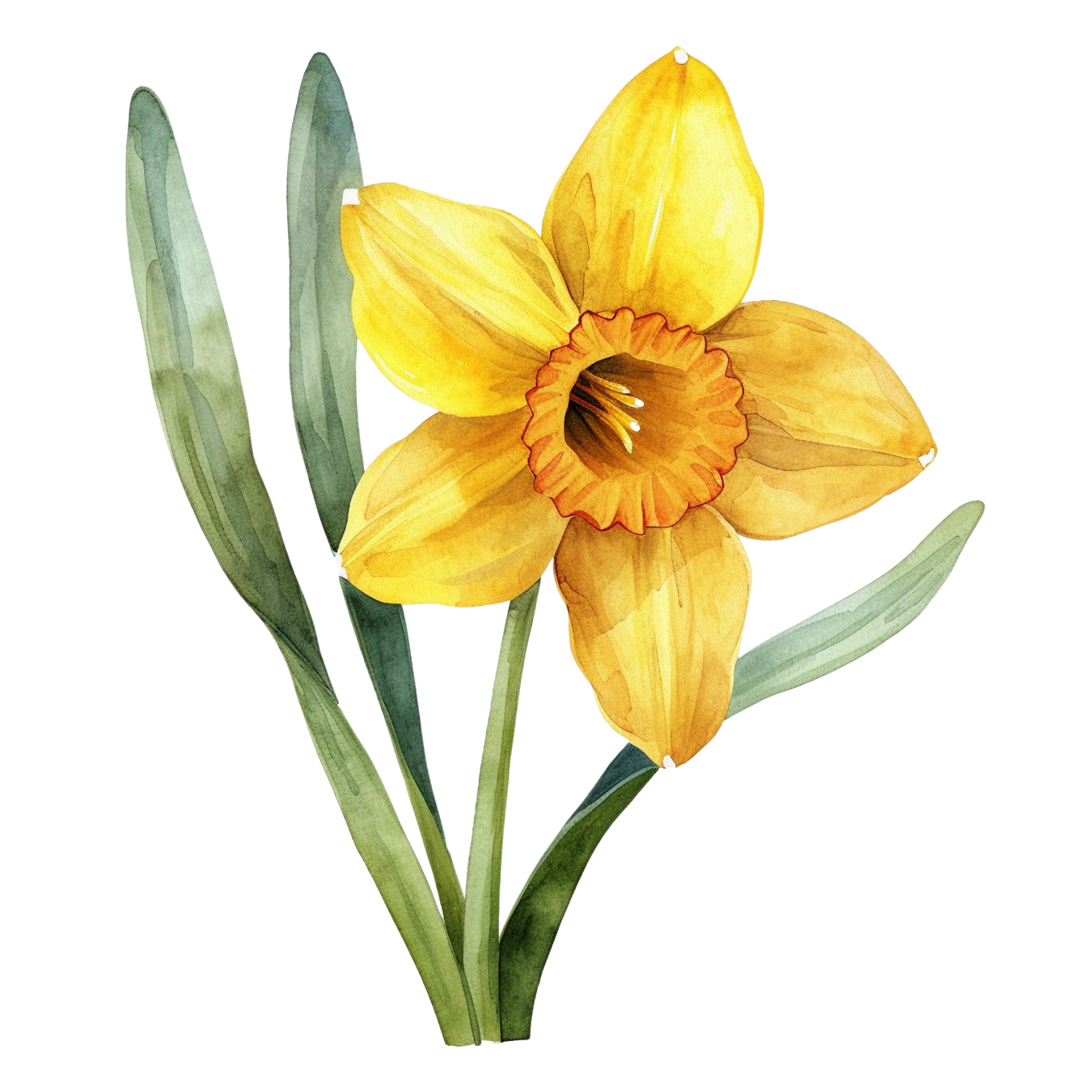 | Bright yellow flowers, trumpet-shaped center | New beginnings, prosperity, rebirth |
Jonquil | Bright yellow, sweetly scented, trumpet-shaped flowers | Desire, affection, the return of happines | |
| April | Daisy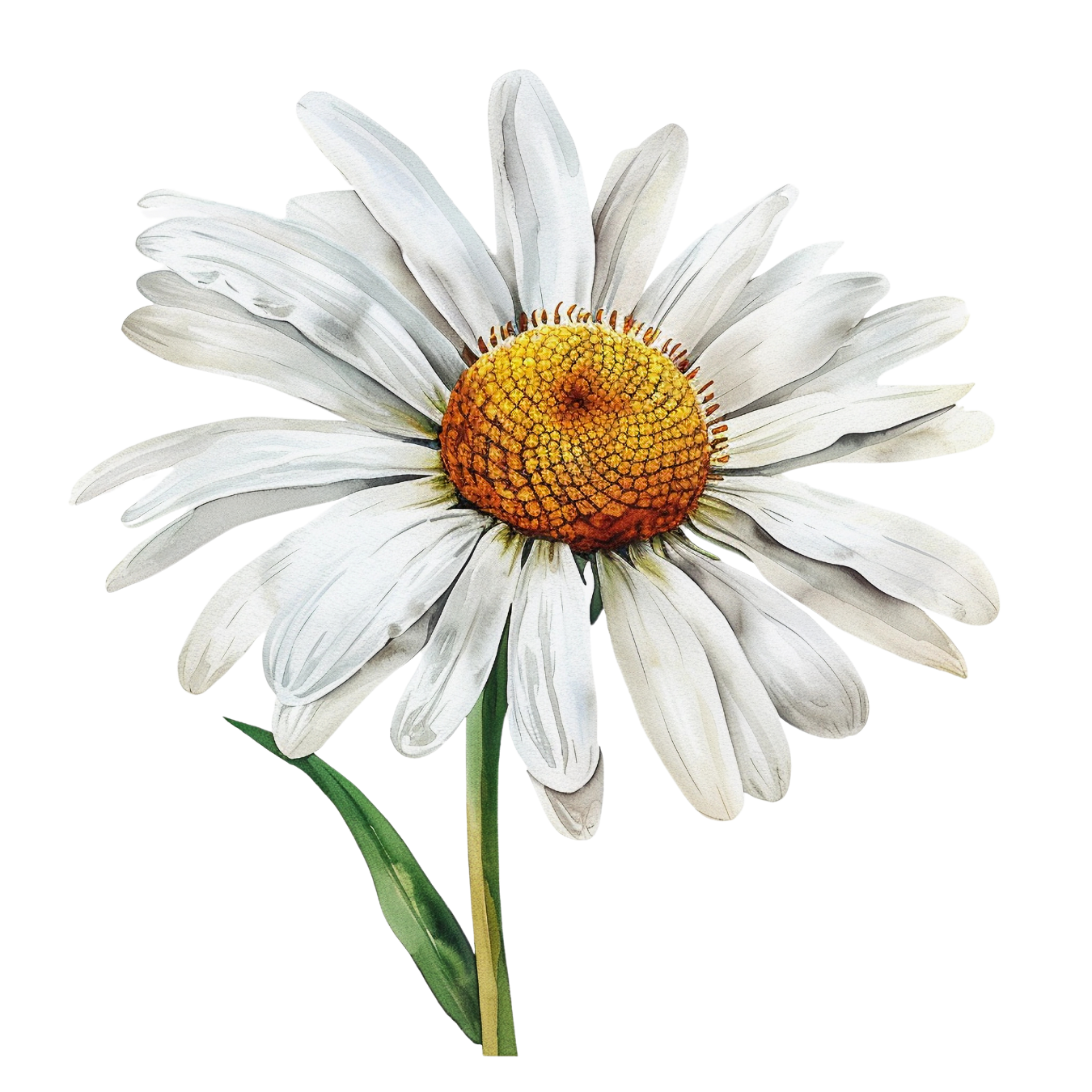 | Simple white petals with a central disk, classic and pure | Innocence, purity, true love |
Sweet Pea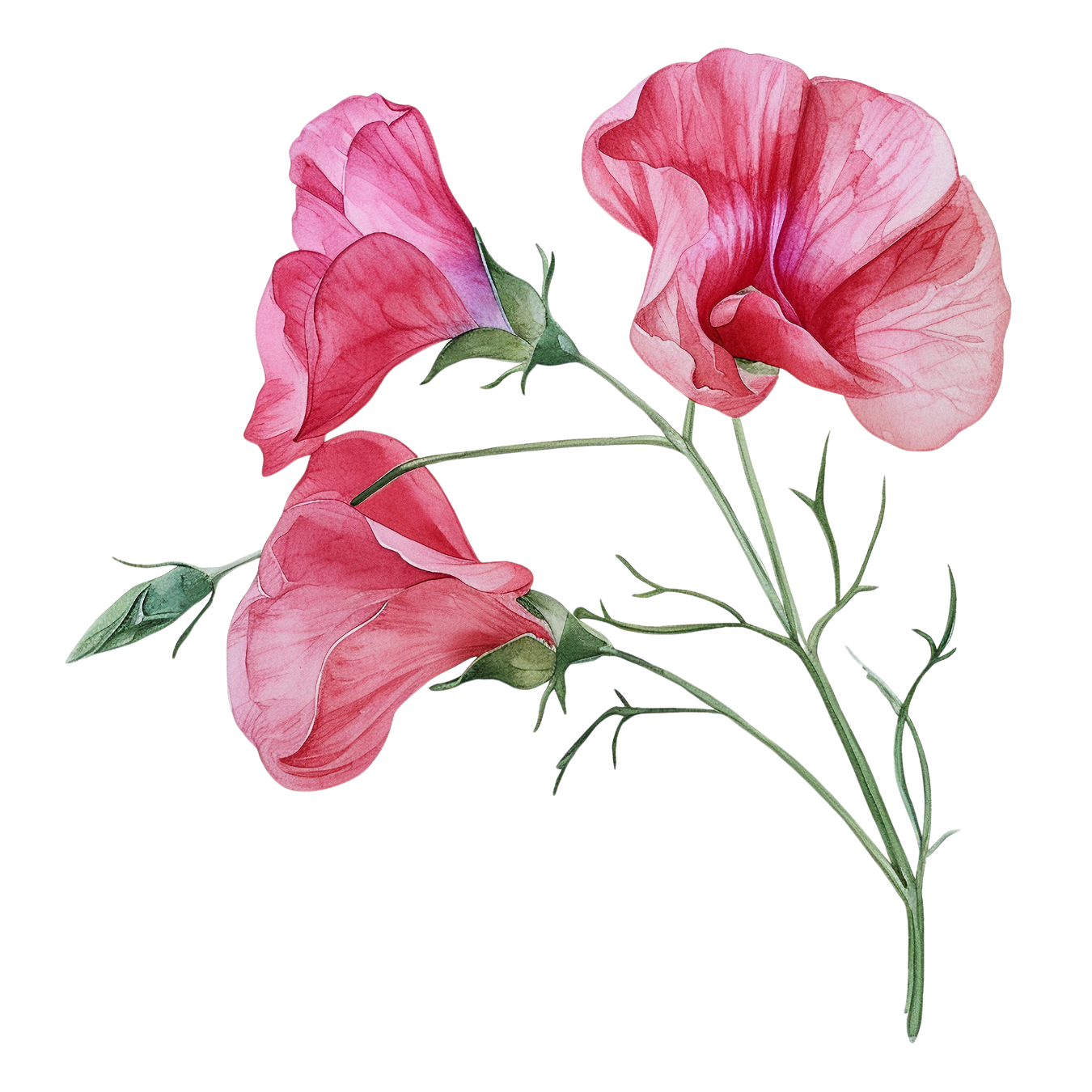 | Fragrant, colorful, climbing plant | Goodbye, departure, blissful pleasure | |
| May | Lily of the Valley | Tiny bell-shaped flowers, sweet scent | Humility, chastity, sweetness |
Hawthorn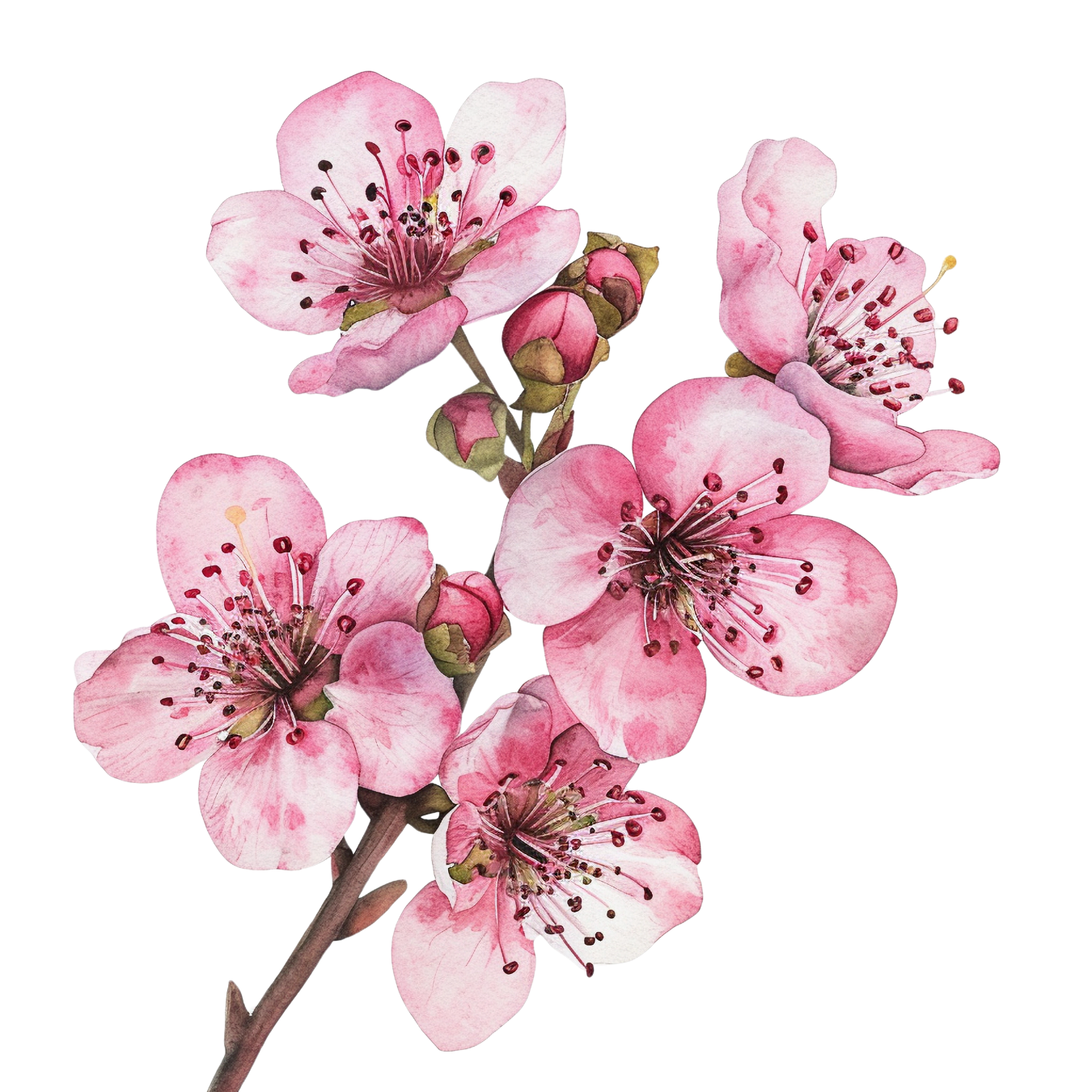 | Small, white to pink flowers, grows as a bush or tree | Hope, supreme happiness, fertility | |
| June | Rose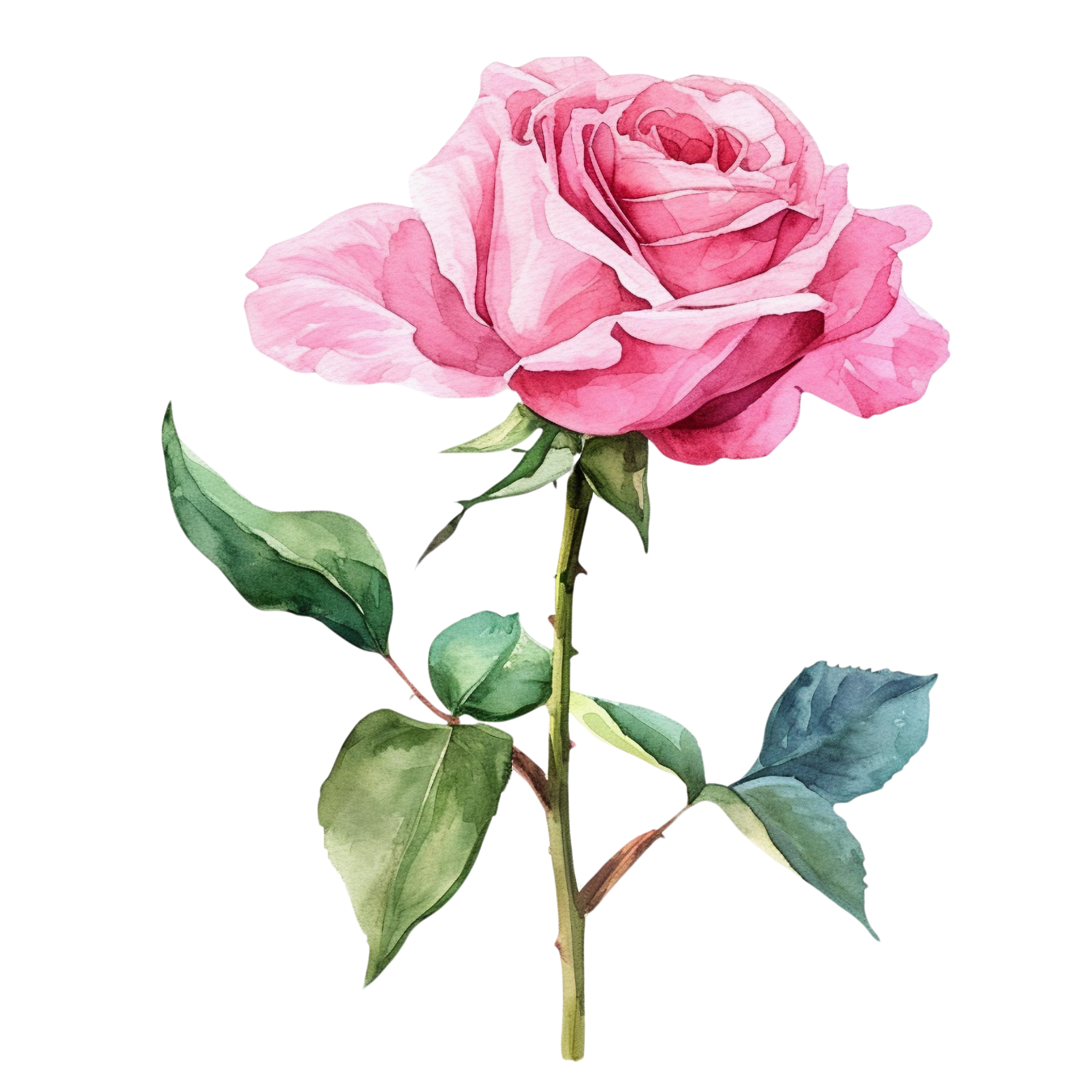 | Variety of colors and sizes, classic symbol of love | Love, honor, faith, beauty |
Honeysuckle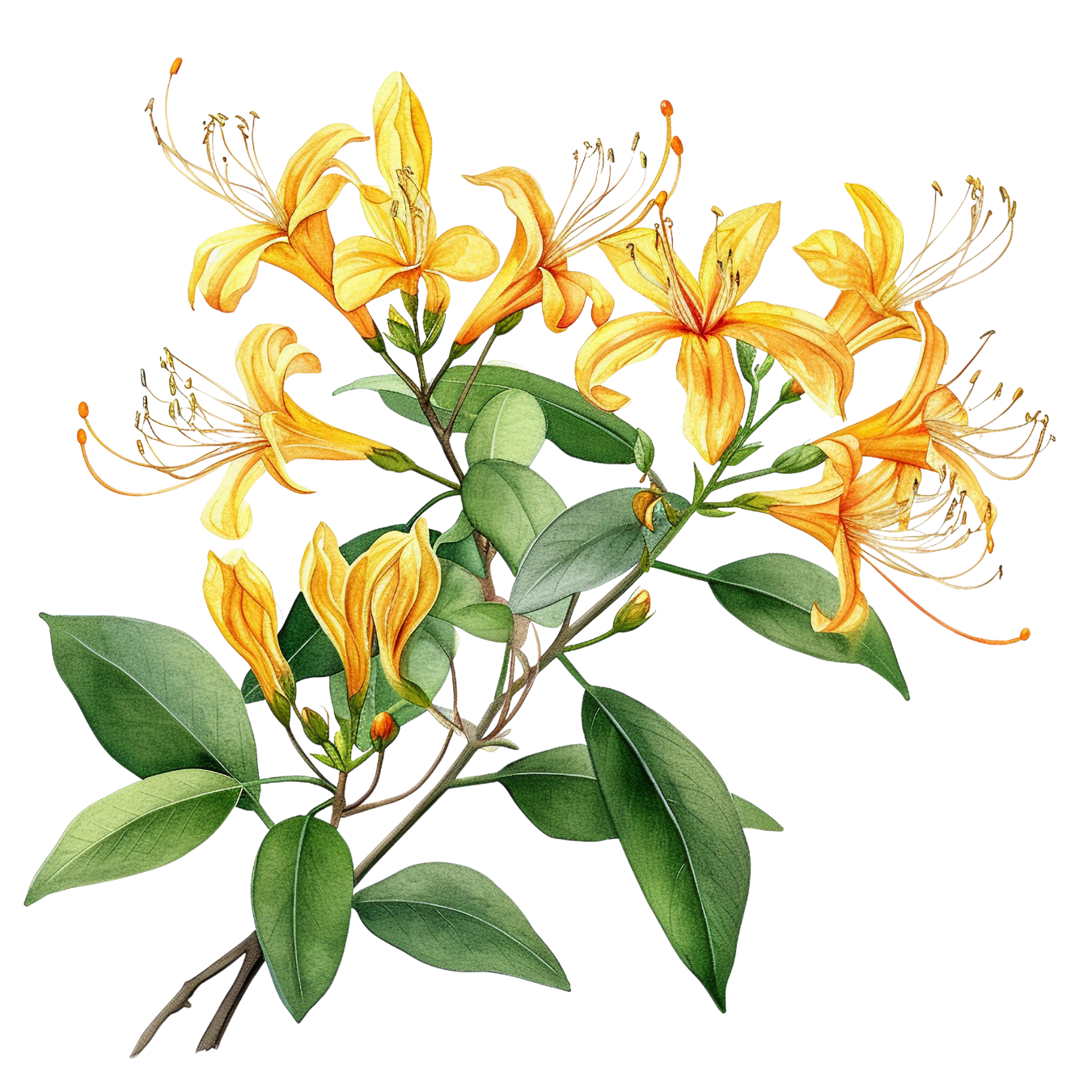 | Strong, sweet scent, tubular flowers | Bonds of love, happiness | |
| July | Larkspur | Tall spikes of flowers, various colors including pink, white, and purple | Lightness, levity, open heart |
Water Lily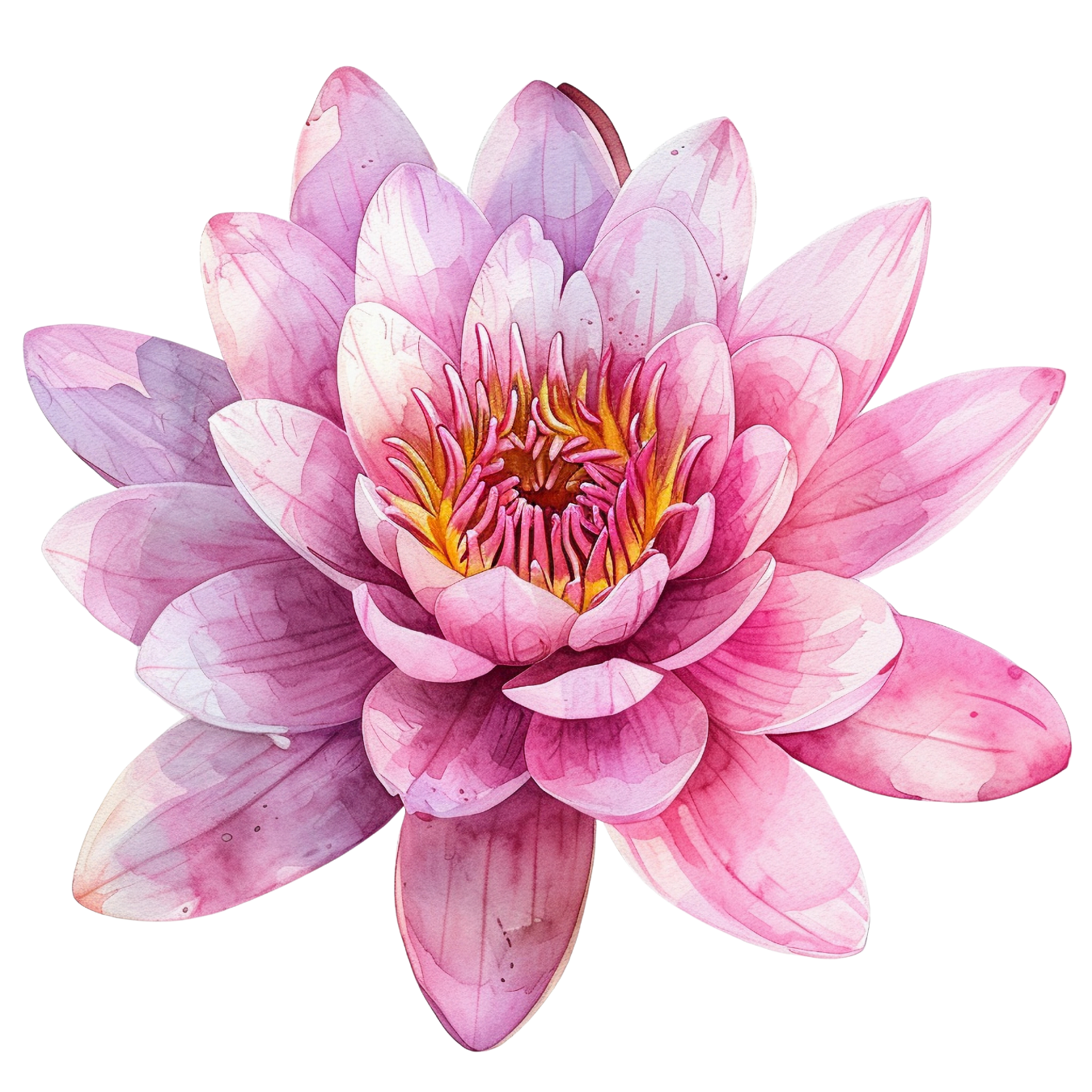 | Aquatic, large disc-like flowers, often white or pink | Purity of heart, enlightenment, rebirth | |
| August | Gladiolus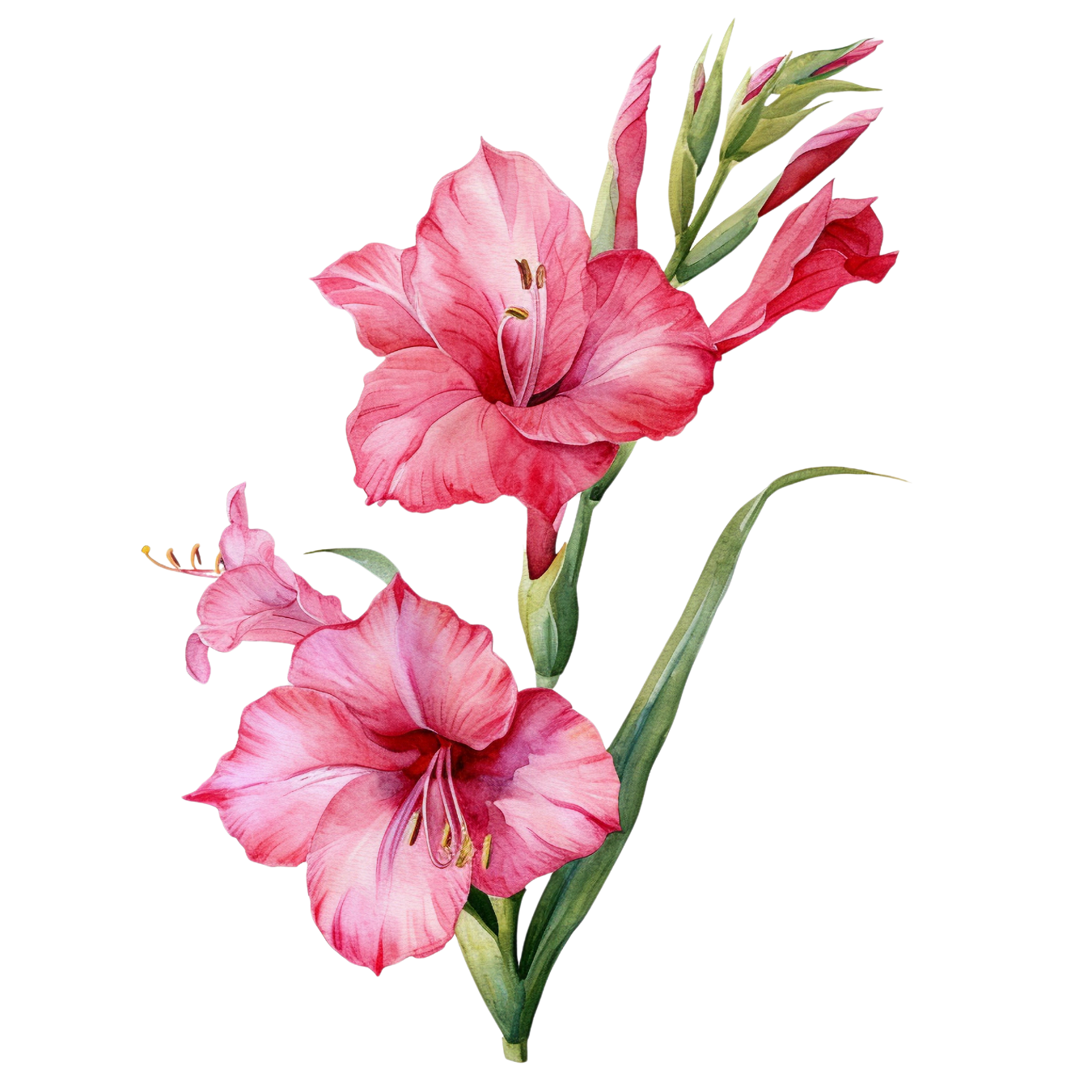 | Tall flowering spikes, variety of colors | Strength, integrity, remembrance |
Poppy | Bright colors, often red, delicate and transient | Peace, sleep, remembrance | |
| September | Aster | Daisy-like flowers, a range of colors including blue, white, and pink | Wisdom, valor, faith |
Morning Glory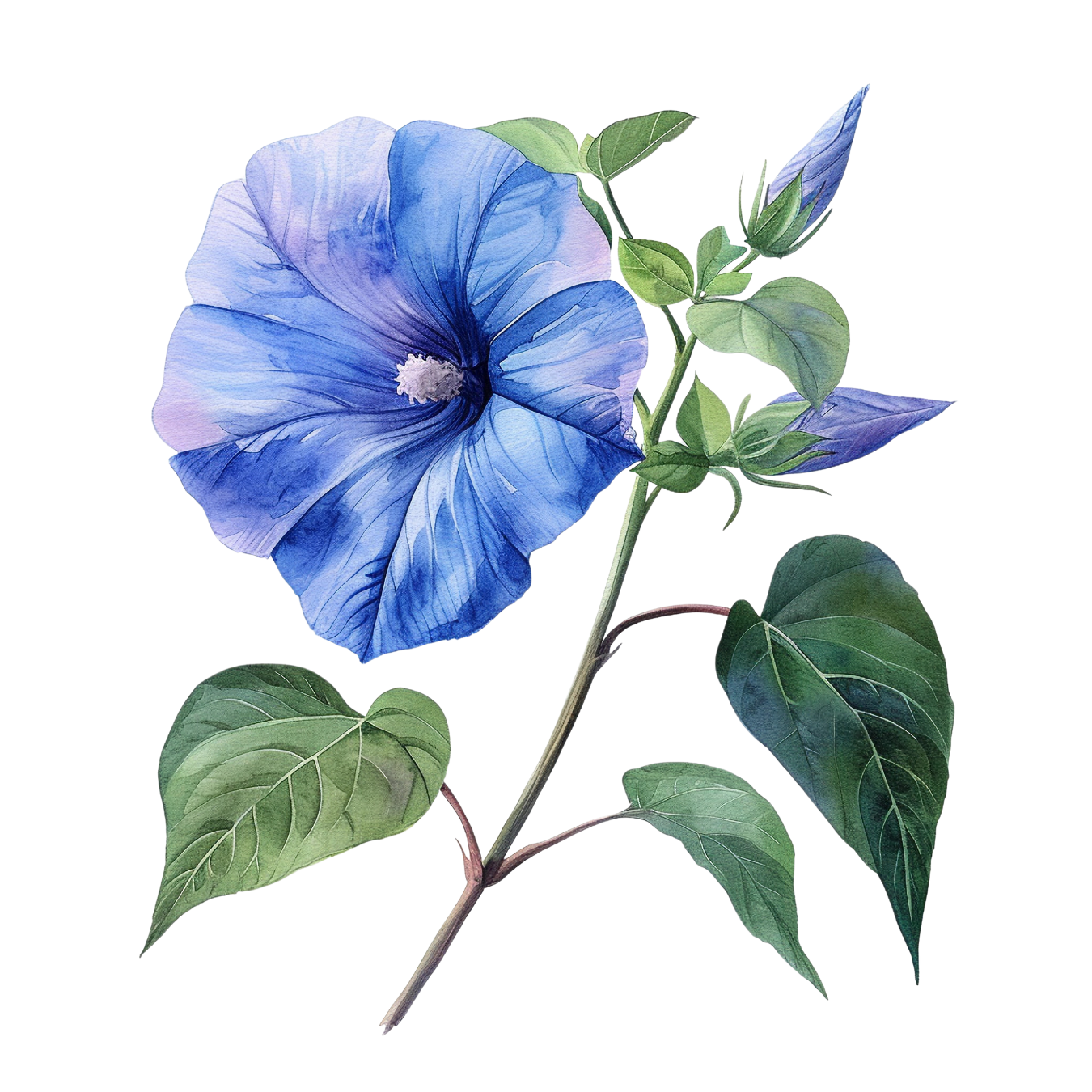 | Bright, trumpet-shaped flowers, opens in the morning | Affection, unrequited love | |
| October | Marigold | Bright orange and yellow colors, robust and hearty | Creativity, passion, resilience |
Cosmos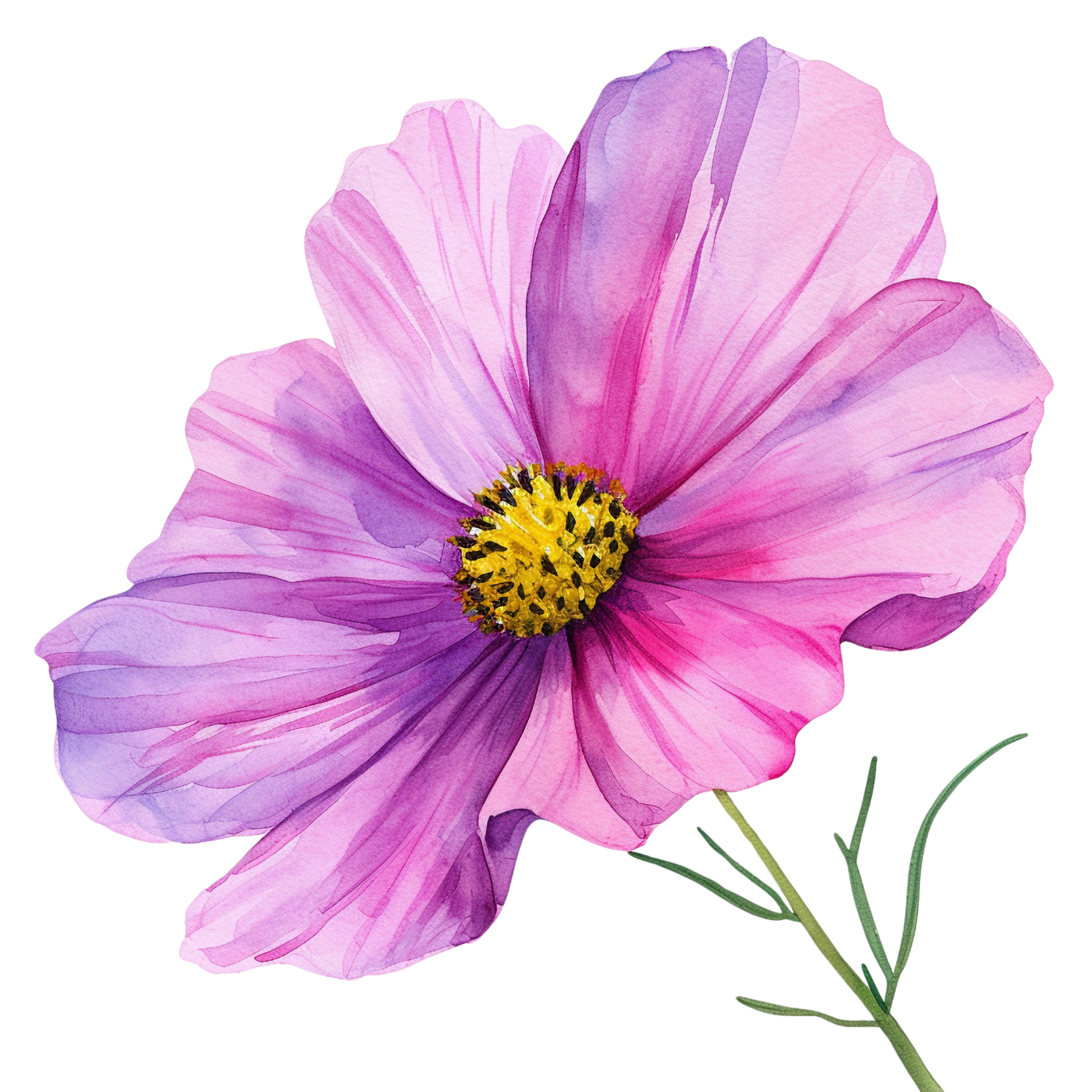 | Delicate, daisy-like flowers in shades of pink, white, and red | Harmony, peace, order | |
| November | Peony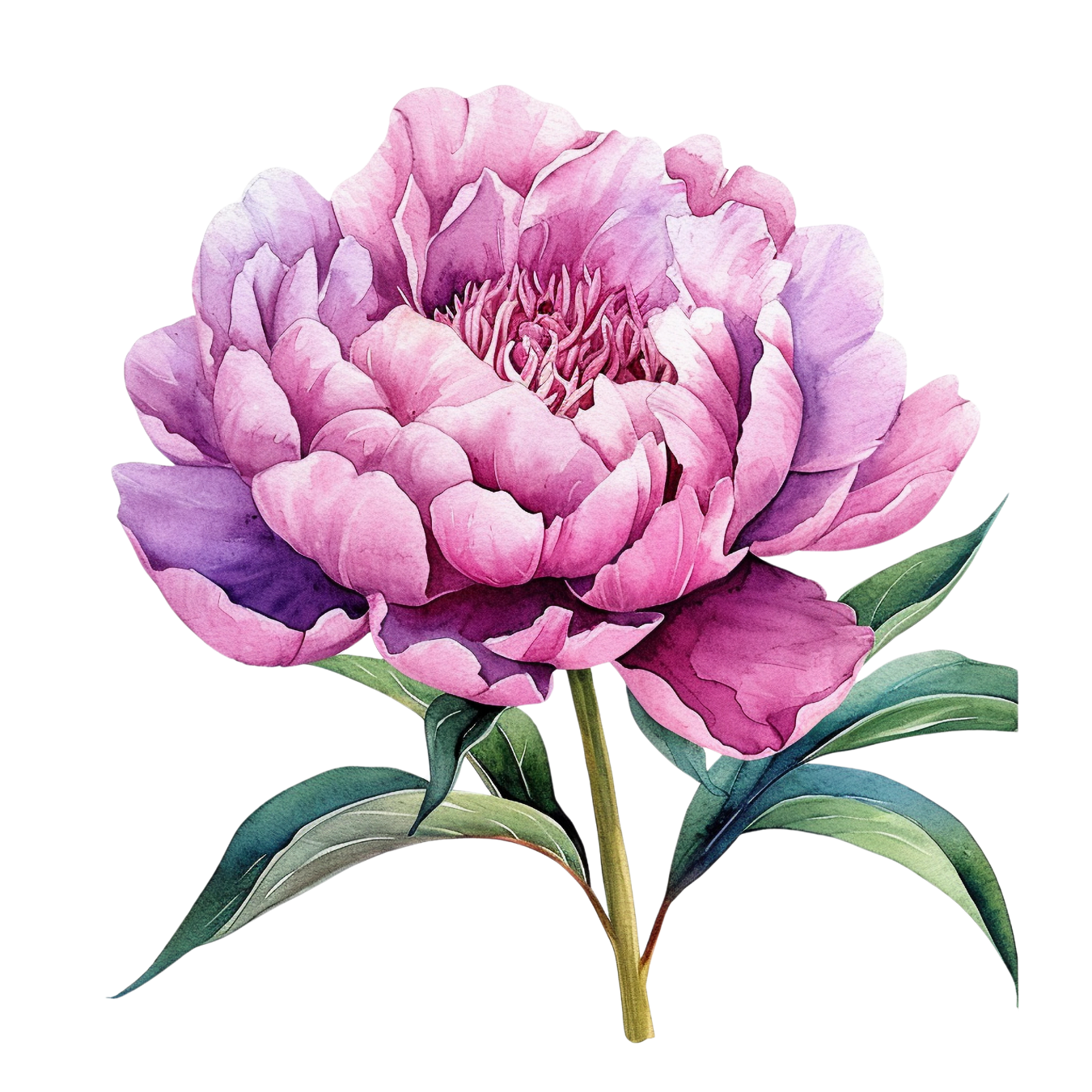 | Large, often fragrant flowers in shades of red, pink, white, or yellow | Prosperity, good luck, love, and honor |
Chrysanthemum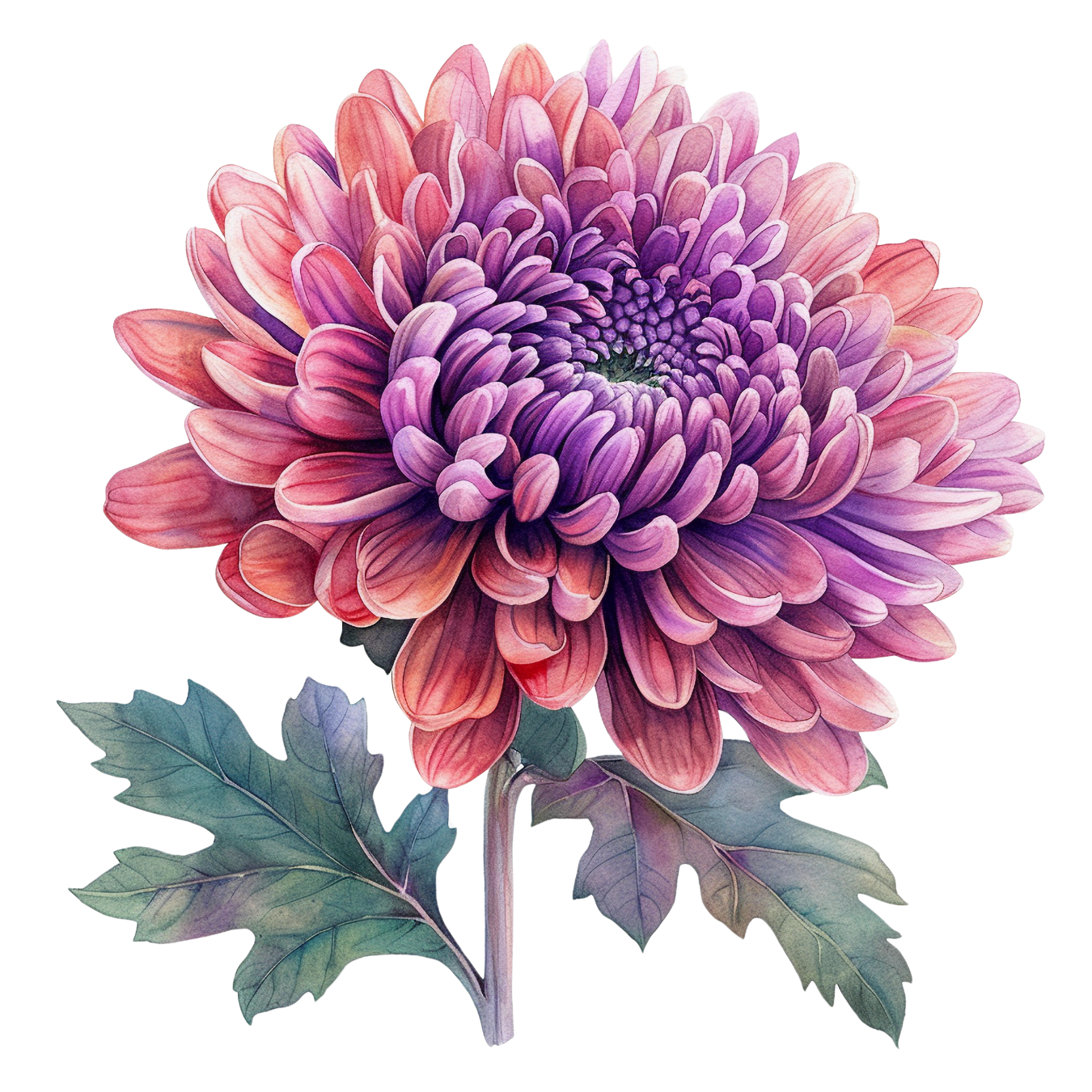 | Variety of colors and forms, from pompons to spiders | Loyalty, honesty, longevity | |
| December | Narcissus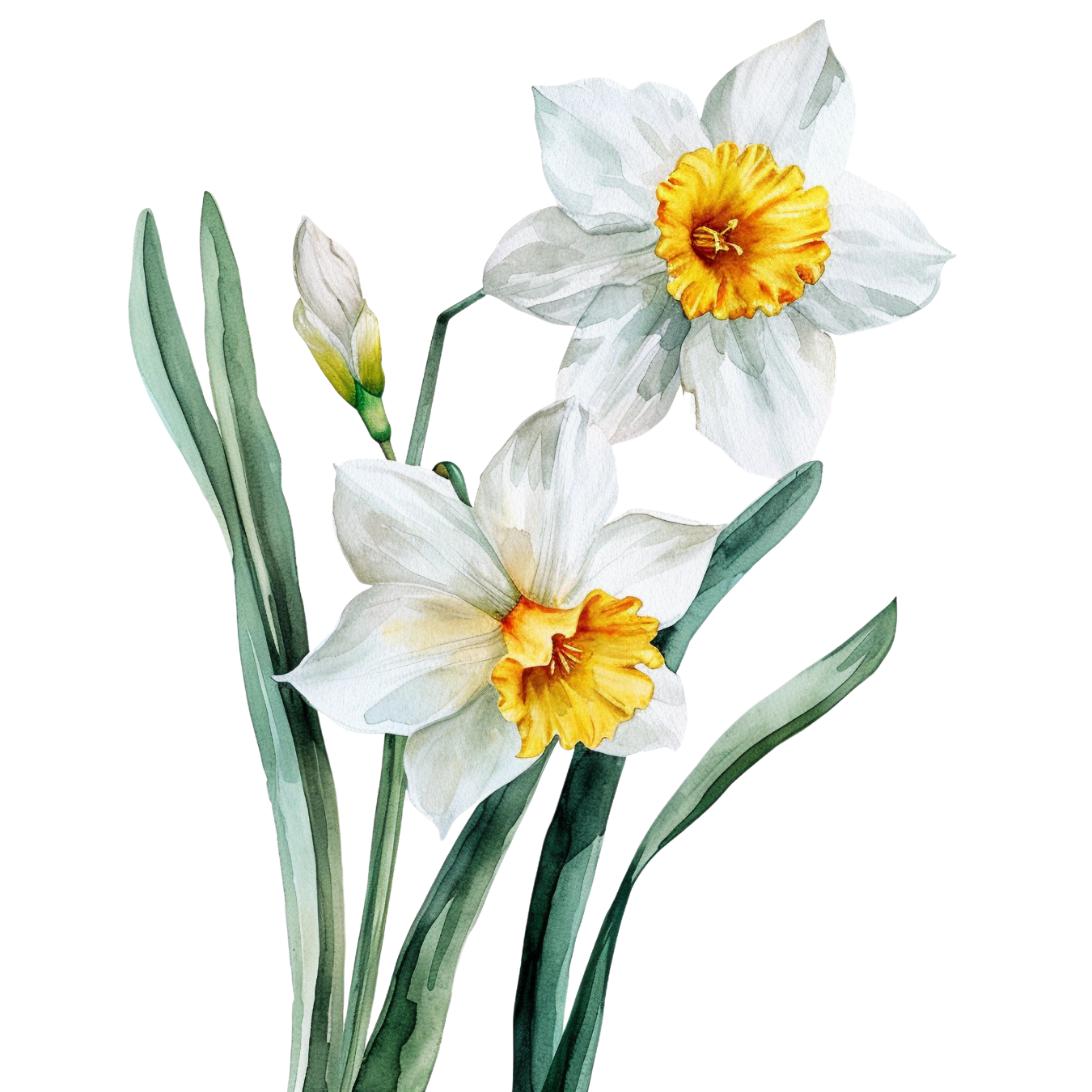 | Typically white or yellow, cup-shaped center | Hope, wealth, self-admiration |
Holly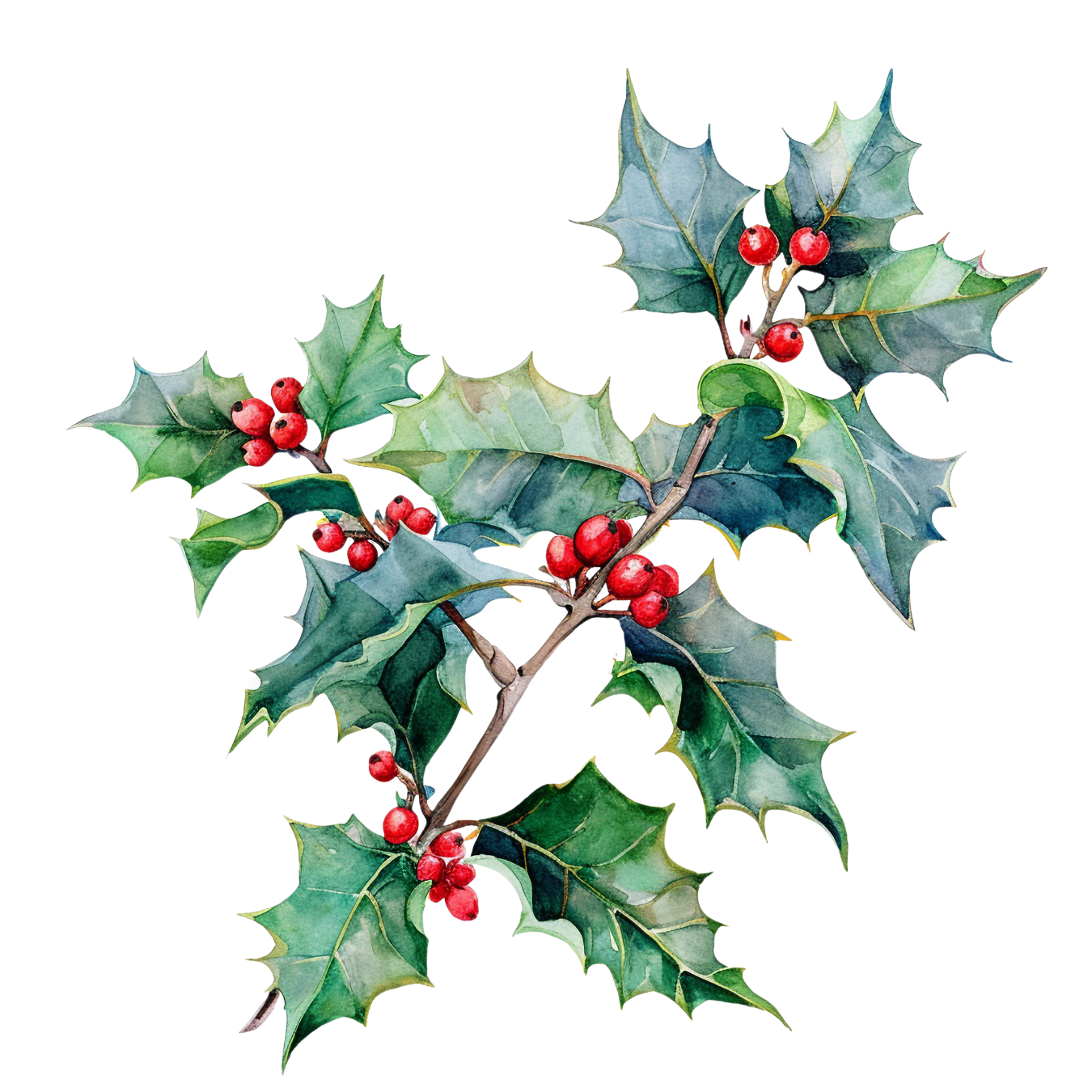 | Dark green leaves, bright red berries | Protection, defense, good fortune |
January: Carnations and Snowdrops

As the year awakens, January greets us with Carnations and Snowdrops, flowers as resilient as they are beautiful. Carnations, with their myriad of colors, offer a palette of emotions – from the deep reds that whisper love and admiration to the pure whites that signify good luck and affection. In contrast, the Snowdrop braves the coldest winter days, emerging through snow to symbolize hope and the rejuvenating promise of the coming spring.
Related Article: January’s Birth Flowers – Meaning
February: Violets and Primroses

February, draped in the velvet hues of Violets and the gentle glow of Primroses, speaks of love in its most tender forms. The Violet, with its deep blue and purple shades, stands as a beacon of loyalty and faithfulness, wrapping us in the warmth of steadfast love. Alongside, the Primrose, in its myriad of soft colors, heralds the first whispers of spring, embodying the youthful and eternal promise of new beginnings and first loves.
Related Article: February’s Birth Flowers – Meaning
March: Daffodils and Jonquils

With the arrival of March, the earth awakens from its slumber, heralded by the vibrant Daffodils and the delicate Jonquils. Daffodils, with their golden blooms, are like a burst of sunshine, symbolizing rebirth, new beginnings, and unrequited love. Their presence is a reminder that after every winter, spring returns with its promise of joy and renewal. Jonquils, a close relative of the daffodil, carry a similar message but with a more personal touch, often associated with affection, desire, and the longing for one’s beloved. Together, they paint March in hues of hope and longing.
Related Article: March’s Birth Flowers – Meaning
April: Daisies and Sweet Peas

April’s gentle transition from spring to summer is beautifully captured by the simplicity of Daisies and the fragrance of Sweet Peas. Daisies, with their white petals radiating around a yellow heart, speak of innocence, purity, and true love. They remind us of the simple joys and the purity of heart. Complementing the daisy’s simplicity, Sweet Peas add a note of fragrant melody to April’s garden. Known for their array of colors and sweet scent, Sweet Peas symbolize blissful pleasure, goodbyes, and a thank you for a lovely time, embodying the bittersweet farewells of spring as summer begins to bloom on the horizon.
Related Article: April’s Birth Flowers – Meaning
May: Lily of the Valley and Hawthorn

As May unfolds, it brings with it the delicate Lily of the Valley and the sturdy Hawthorn, each telling tales of spring’s full bloom. The Lily of the Valley, with its tiny white bells, fills the air with its exquisite fragrance, symbolizing humility, chastity, and the return of happiness. It’s a gentle reminder of life’s renewing cycles and the purity of heart. Complementing this softness, the Hawthorn stands with its thorny branches and delicate blossoms, representing hope, protection, and the joy found in new beginnings. Together, they embody the essence of May, a time of pure joy and renewal in the heart of spring.
Related Article: May’s Birth Flowers – Meaning
June: Roses and Honeysuckles

June arrives in a riot of colors and scents, celebrated through the timeless beauty of Roses and the sweet allure of Honeysuckles. Roses, in their myriad hues, speak the complex language of love, with each color declaring a different emotion – from passionate reds to friendly yellows. They remind us of the depth and variety of relationships and the enduring beauty of love in all its forms. Honeysuckles, with their intoxicating fragrance, symbolize the bonds of love and the sweetness of a devoted affection. Climbing and thriving, they remind us to reach out and embrace the connections that enrich our lives. Together, Roses and Honeysuckles make June a month of love, celebration, and the nurturing of personal connections.
Related Article: June’s Birth Flowers – Meaning
July: Larkspur and Water Lily

In the heat of July, nature showcases the graceful Larkspur and the serene Water Lily as the birth flowers of the month. Larkspurs, with their tall spikes of delicate petals, symbolize levity, joy, and love, mirroring the carefree spirit of summer. Their vibrant colors dance in the sunlight, bringing a sense of whimsy and spontaneity to July’s landscape. Water Lilies, floating serenely on tranquil ponds and streams, embody tranquility, purity, and enlightenment. Their serene beauty reflects the inner peace and harmony sought during the long, lazy days of summer. Together, Larkspurs and Water Lilies paint a portrait of July’s essence, inviting us to embrace the simplicity and beauty of the natural world.
Related Article: July’s Birth Flowers – Meaning
August: Gladiolus and Poppy

As August unfolds, it reveals the bold Gladiolus and the vibrant Poppy as the birth flowers of the month. Gladiolus, with their tall, striking spikes of blossoms, symbolize strength, integrity, and sincerity, echoing the determination and resilience required to thrive in the summer’s heat. Their vibrant hues ignite passion and inspiration, infusing August with a sense of purpose and drive. Poppies, with their delicate, papery petals in shades of red, pink, and orange, represent remembrance, resilience, and imagination. They bloom bravely amidst fields and meadows, a symbol of hope and renewal as summer begins to wane. Together, Gladiolus and Poppies embody the spirit of August, urging us to embrace our inner strength and creativity as we savor the final days of summer’s splendor.
Related Article: August’s Birth Flowers – Meaning
September: Asters and Morning Glories

September brings a blend of summer’s warmth and autumn’s approach, marked by the elegant Asters and the vibrant Morning Glories. Asters, with their star-shaped flowers, symbolize love, wisdom, and valor, echoing the depth and complexity of the changing seasons. They remind us of the persistence of beauty and the cycle of life. Morning Glories, with their trumpet-shaped blooms that greet the dawn, represent affection, unrequited love, and the fleeting nature of life. Their daily opening and closing mirror the transient beauty of September days, encouraging us to cherish each moment.
Related Article: September’s Birth Flowers – Meaning
October: Marigolds and Cosmos

As October unfolds, the garden is alight with the fiery hues of Marigolds and the delicate grace of Cosmos. Marigolds, with their bold oranges and yellows, symbolize passion, creativity, and the cycle of life. They are a vibrant tribute to autumn’s splendor and the celebration of life’s continuous renewal. Cosmos, with their simple yet profound beauty, stand for harmony, peace, and the joy found in simplicity. Their fluttering petals in the autumn breeze remind us of the balance and beauty in letting go and embracing the changes that life brings.
Related Article: October’s Birth Flowers – Meaning
November: Chrysanthemums and Peonies
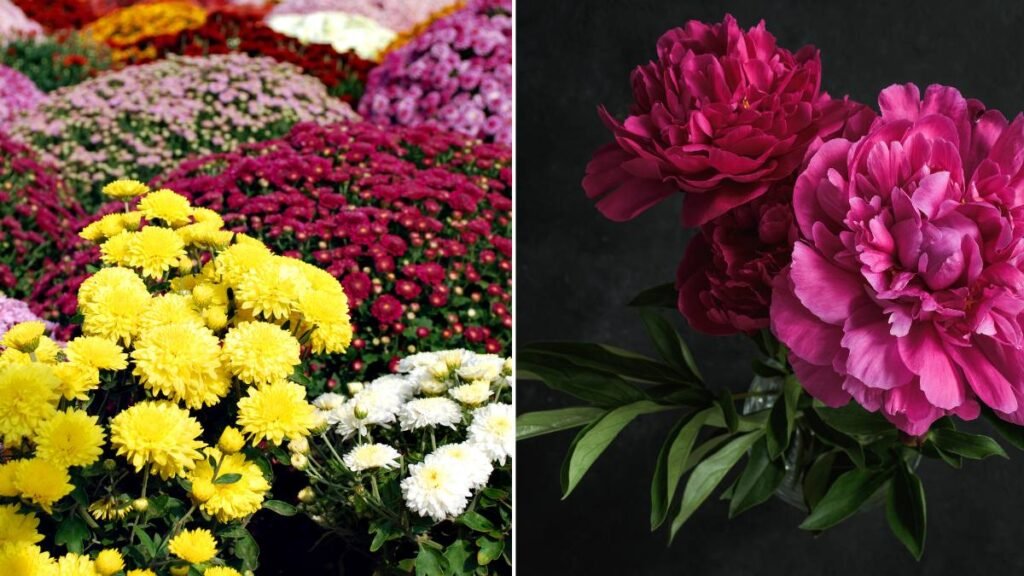
In November, the rich colors and textures of Chrysanthemums and the lush elegance of Peonies take center stage. Chrysanthemums, with their diverse forms and hues, embody loyalty, honesty, and friendship, offering comfort and warmth as the days grow shorter. They remind us of the enduring bonds that sustain us through the changing seasons. Peonies, though traditionally associated with spring, are celebrated in November for their symbolisms of prosperity, romance, and good fortune, providing a lush counterpoint to the autumnal landscape and reminding us of the abundance and beauty that life offers.
Related Article: November’s Birth Flowers – Meaning
December: Narcissus and Holly

December’s chill is warmed by the promise of Narcissus and the enduring strength of Holly. Narcissus, particularly the paperwhite variety, heralds the coming of new beginnings and self-reflection, embodying the hope and renewal that the end of the year signifies. Holly, with its vibrant green leaves and red berries, stands as a symbol of protection and eternal life, embodying the festive spirit of December and the enduring nature of life through the winter’s cold.
Related Article: December’s Birth Flowers – Meaning
Conclusion
From the hopeful snowdrops of January to the protective holly of December, the journey through the year’s birth flowers is a rich tapestry of colors, scents, and meanings. Each bloom brings with it a unique story and symbolism, reflecting the diverse experiences and emotions that make up the human experience. Whether used to celebrate, commemorate, or simply decorate, these flowers remind us of the beauty and resilience of life, encouraging us to appreciate the natural world and the cycle of seasons that shapes our lives.

